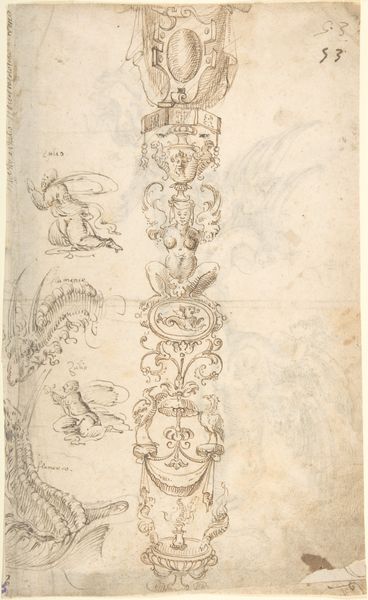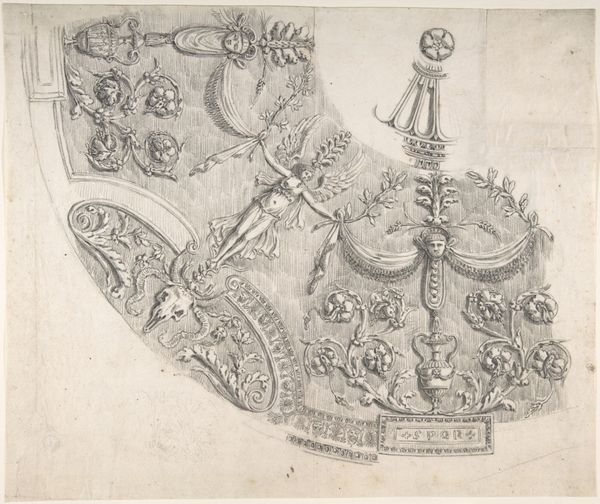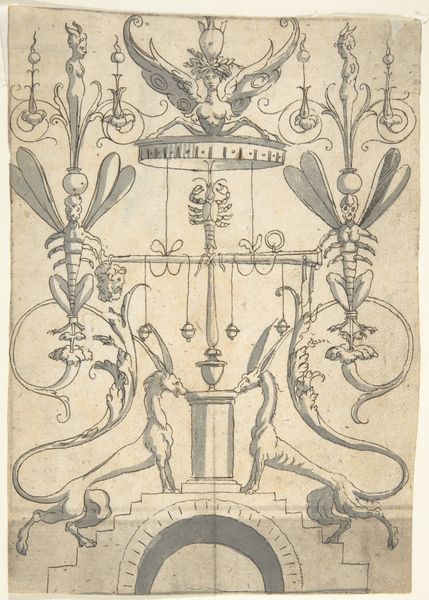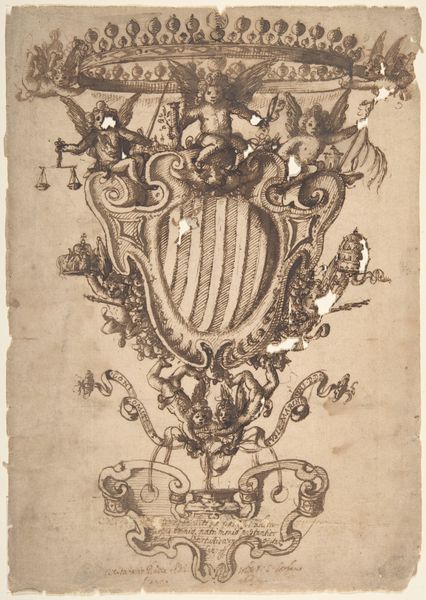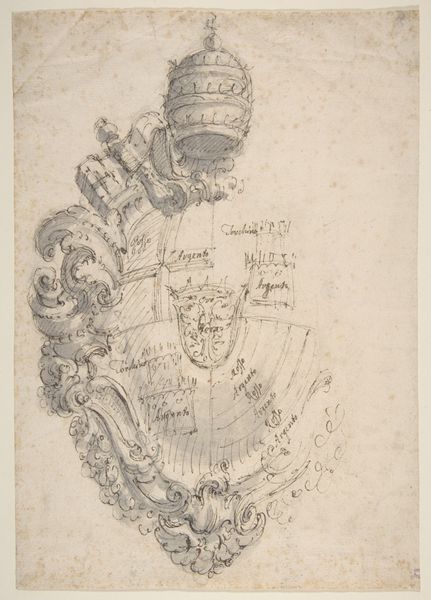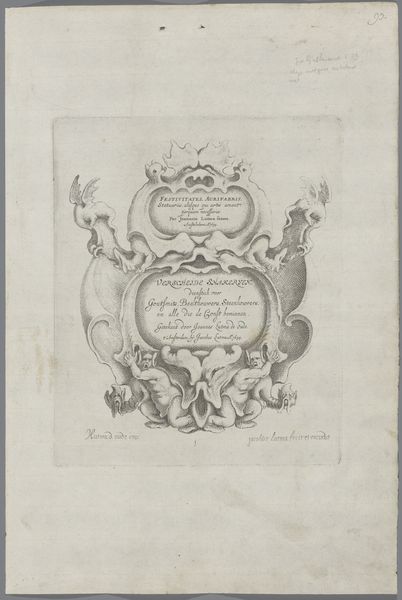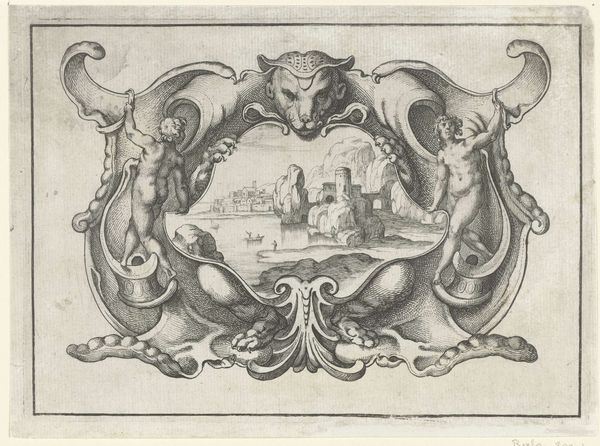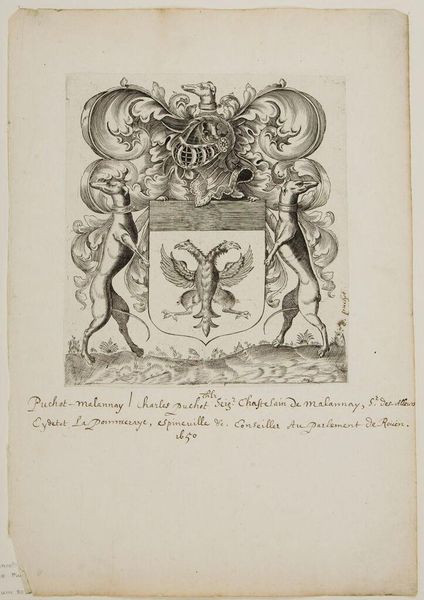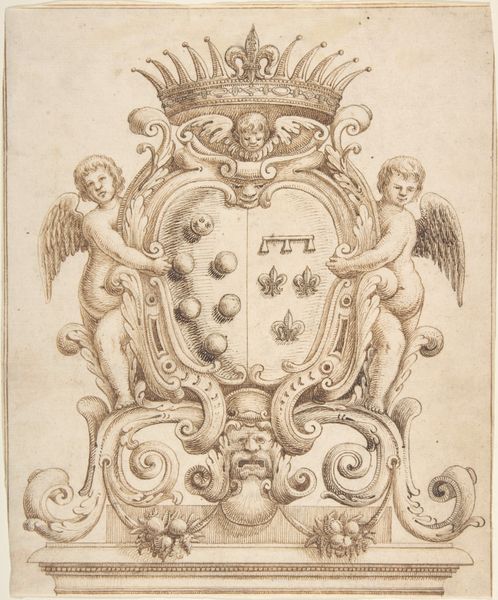
Funereal Cartouche with Inscription and Sketches of Skeletons and Ornamental Details 1628
0:00
0:00
drawing, print, paper, ink, pencil, chalk, pen
#
portrait
#
drawing
# print
#
pen sketch
#
pencil sketch
#
paper
#
vanitas
#
ink
#
pencil
#
chalk
#
pen
#
academic-art
Dimensions: 321 × 262 mm
Copyright: Public Domain
Editor: This is "Funereal Cartouche with Inscription and Sketches of Skeletons and Ornamental Details" by Baccio del Bianco, created in 1628, using pen, pencil, ink, chalk on paper. I'm immediately struck by how morbidly playful it is, especially with the skeletons jauntily supporting the cartouche. What does this piece say to you? Curator: Well, this piece really speaks to the socio-cultural context of 17th-century Italy. The "memento mori," or the reminder of death, was a powerful motif at the time. These weren’t just morbid obsessions; they were ways of grappling with mortality, often commissioned during times of widespread disease and religious reflection. Editor: So, this piece wasn't necessarily meant to be depressing? Curator: Not necessarily. Look at where it would have been placed, perhaps above a tomb, a site for ritual and remembrance. These images reminded viewers of the transience of life, encouraging piety. Moreover, this design suggests a patron who sought to participate in a culture of commemoration, and to show wealth and sophistication through the commission of talented designers such as del Bianco. Editor: That's fascinating. I hadn't considered the potential display context and its influence. Curator: Consider also, this isn't just art for art’s sake; it's tied to institutions and the politics of imagery. How did the Church view images of death, and what kind of visual vocabulary were artists expected to employ? Editor: It's interesting how different institutions shaped the meaning and reception of the artwork. Curator: Indeed. Seeing the artwork within its specific socio-historical context really adds depth to how we appreciate its meaning and the cultural values of that era. Editor: I'll definitely remember to look into the original context and forces when trying to understand a work of art from now on.
Comments
No comments
Be the first to comment and join the conversation on the ultimate creative platform.
